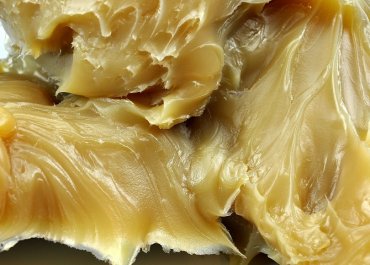
More than half of all grease produced during 2015 was made in the Asia-Pacific region, according to the National Lubricating Grease Institutes Grease Production Survey Report.
Reported worldwide production dropped to 1.1 million metric tons (2.48 billion pounds) last year, and comparative analysis shows a 3.3 percent decline from 2014 output. The survey covers production during calendar year 2015, with voluntary respondents self-reporting the data. Prior year data is also updated and shown for 2014, 2013 and 2012.

Photo: SKF
Asia-Pacific manufactured 1.4 billion pounds of grease, or 55 percent of worldwide production, in 2015.
Together India and the Indian subcontinent, Japan, Southeast Asia and Pacific nations, and China manufactured 1.4 billion pounds of grease, or 55 percent of the global total. Lithium was the most popular thickener, and most products were made from conventional base fluids. Use of other thickeners and base fluids varied by area.
China produced the most grease in the region at 392,000 tons, or 64 percent of regional output. This was a significant decline of 4.9 percent from the amount producers reported in 2014 – despite an increase of 6 survey participants from the country, according to Grease Technology Solutions president, Chuck Coe.
Eighty percent of Chinas greases were thickened with lithium, and calcium was the second most popular at 9.5 percent. Polyurea came in third at nearly 5 percent, and other types accounted for the rest.
This was the sixth year that NLGI included base stocks in its production survey, and 86 percent of respondents reported such information. Most grease manufactured in China – 353,000 tons – was produced with conventional base fluids. Synthetics grabbed 29,000 tons, semi-synthetics followed at 10,000 tons, and biobased fluids only accounted for 23 tons.
Second in Asia-Pacific but far behind Chinas numbers, Japan produced nearly 79,000 tons of grease in 2015, or 13 percent of regional output. Lithium grease took a far less significant slice of the pie here, but still came in at nearly 60 percent of grease made in the country. Polyurea greases accounted for 28 percent, the worlds highest share of any market for this type. Nearly 99 percent of base fluids reported by Japanese survey takers was conventional stocks.
India and the Indian subcontinent made 12 percent, or 74,000 tons, of the regions grease. The well-known lithium lovers used such soaps to thicken 91 percent of their greases. Calcium and sodium soaps came it at around 3 percent each, followed by other metallic soaps at nearly 2 percent. Aluminum soap, clay and other non-soap thickeners were used in less than 1 percent of the areas greases, and polyurea was only used to make 1.6 tons of product.
Conventional base fluids also came out on top of reported grease production in and around India at 98 percent, trailed by semi-synthetic, biobased and synthetic types.
Southeast Asia and Pacific countries chipped in 11 percent of the regions grease production at 67,000 tons. Once again, lithium topped the list of thickeners at 68 percent, followed by calcium (23 percent) and aluminum (5 percent).
All NLGI survey participants report their production in confidence to the independent consulting firm Grease Technology Solutions (www.grease-tech.com), which then analyzes and compiles the data. No one at NLGI ever sees any individual companys data, the organization emphasizes.
Copies of the 2015 NLGI Grease Production Survey are provided free to NLGI member companies and to survey participants. To purchase it online, visit www.nlgi.org or email nlgi@nlgi.org. The report is available in English only.
|
Region |
Total Reported (metric tons) |
Share of Global Output |
|
Indian & Subcontinent |
74,000 |
7% |
|
Japan |
79,000 |
7% |
|
Pacific & Southeast Asia |
67,000 |
6% |
|
P.R. China |
392,000 |
36% |
|
Rest of World |
490,000 |
44% |
|
TOTAL |
1.1 million |
100% |